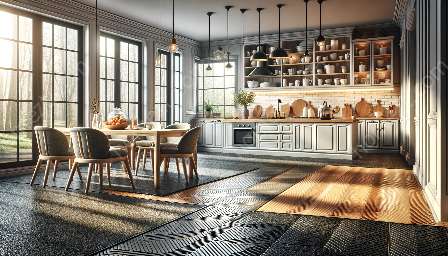Are you in search of stylish, sustainable, and durable flooring for your kitchen and dining area? Look no further than cork flooring. In this comprehensive guide, we'll delve into the benefits, installation process, and maintenance of cork flooring, and why it's an ideal choice for your home.
The Benefits of Cork Flooring
Cork flooring offers a myriad of benefits that make it an excellent choice for your kitchen and dining area. First and foremost, cork is a sustainable material, making it an environmentally friendly option. Cork is harvested from the renewable bark of cork oak trees, allowing the trees to regenerate and contribute to a healthier ecosystem. Additionally, cork flooring is highly resilient and provides a cushioned surface that is comfortable to stand on, making it perfect for kitchens where you may spend long periods of time cooking and entertaining.
Cork is also naturally resistant to mold, mildew, and pests, making it a hygienic choice for your home. Its shock-absorbent properties reduce noise and vibrations, making it a quiet and peaceful flooring option for your kitchen and dining area. Furthermore, cork flooring is available in a wide range of colors and patterns, allowing you to find the perfect style to complement your home's aesthetic.
Installation of Cork Flooring
When it comes to installing cork flooring in your kitchen and dining area, it's important to consider the subfloor and the method of installation. Cork flooring can be installed over a variety of subfloors, including concrete, plywood, and existing flooring, making it a versatile option for kitchen renovations. The installation process typically involves gluing the cork tiles or planks to the subfloor, creating a seamless and durable surface that enhances the beauty of your kitchen and dining area.
It's important to acclimate cork flooring to the room's humidity and temperature before installation to prevent structural issues in the future. Additionally, professional installation may be recommended to ensure a perfect finish, especially in areas prone to moisture or heavy foot traffic.
Maintenance of Cork Flooring
Proper maintenance is essential to ensure the longevity and beauty of your cork flooring in the kitchen and dining area. Regular sweeping and vacuuming will help remove dirt and debris that can scratch the surface of the cork. Additionally, using felt pads on furniture legs and avoiding high heels can prevent indentations and damage to the flooring.
Spills should be wiped up promptly to prevent staining, and a damp mop with a mild detergent can be used for deeper cleaning. It's important to avoid excessive water on the surface and to use a suitable cork floor cleaner to maintain its natural luster.
Cork Flooring and Kitchen Decor
When considering cork flooring for your kitchen and dining area, it's crucial to select a style that complements your existing decor. Whether you prefer a rustic, modern, or traditional aesthetic, cork flooring comes in a variety of finishes and colors to suit your preferences. Its natural texture and warmth add a cozy and inviting atmosphere to your home, making it the perfect choice for creating a welcoming kitchen and dining space.
The Conclusion
Considering the numerous benefits, ease of installation, and low-maintenance nature of cork flooring, it stands out as an attractive and practical choice for your kitchen and dining area. With its sustainability, durability, and aesthetic appeal, cork flooring can elevate the ambiance of your home while providing a comfortable and stylish surface to enjoy daily activities in the heart of your home.







































